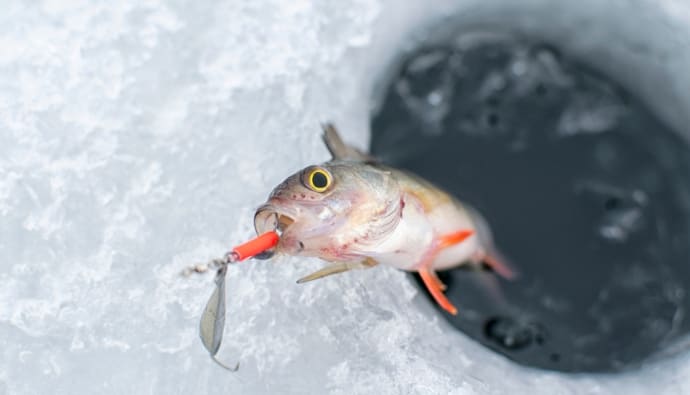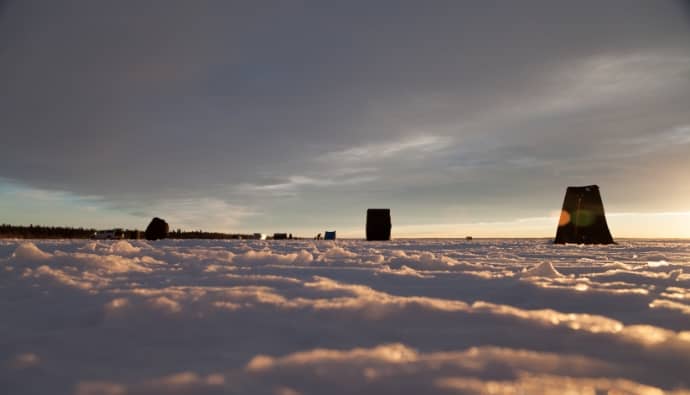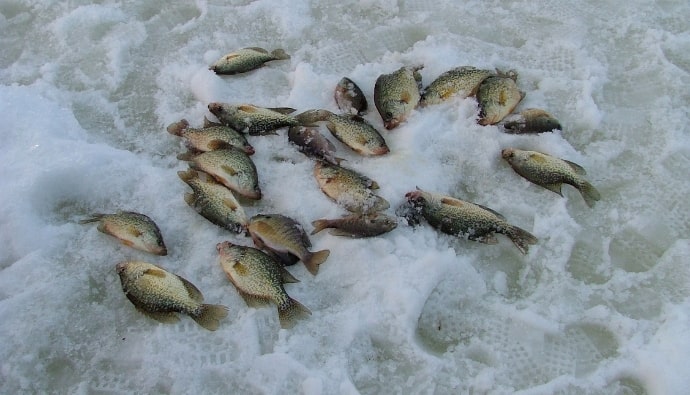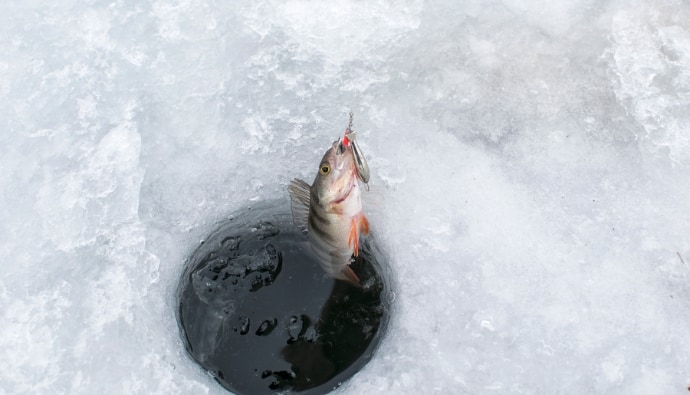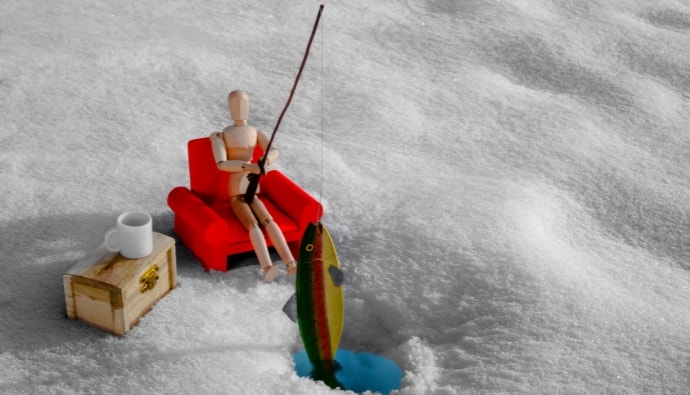It’s the ice fishing season! When ponds and lakes freeze over, many anglers hang their rod and reel up for the winter but not the adventurous ice fisherman.
To some anglers, this can seem like a daunting task to take on. In reality, it is not that difficult to enjoy a day on frozen water.
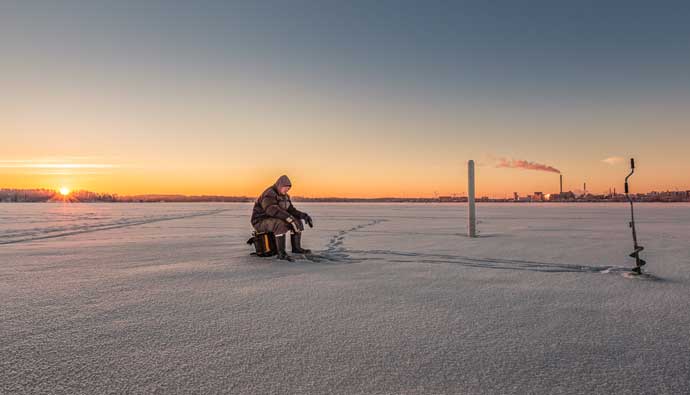
I remember as a child going with my father to a river that had frozen over. The ice was clear enough that you could see through it. I remember seeing fish swimming underneath the ice and could not understand how they were able to do that.
In this article, I am going to cover the basic tips and tricks that will help you be successful in your adventure so you can catch more fish such as northern pike, trout, largemouth, smallmouth, panfish, and more.
Let’s start catching fish this ice fishing season in the icy water!
What is Ice Fishing?
Although some people consider fishing on the ice to be a boring and slow pastime, those who know how to ice fish properly can often have a blast on the lake. In cold weather conditions, when the fish are biting well, it can be some of the most exciting fishing you’ll ever do! If you’re new to fishing in winter or just want to up your game this winter, check out these hot tips for success on the ice.
When rivers, lakes, and ponds freeze over, it can make fishing seem inaccessible. Alaskan people solved this problem many years ago because it meant the difference between food and starvation.
Ice fishing can easily be defined as the act of boring a hole into the ice above a frozen fishing area large enough to pull a fish through.
Fishing in areas such as Alaska is a big deal and is taken very seriously. They have heated fishing houses and a hole in the floor that can be situated over the borehole for fishing.
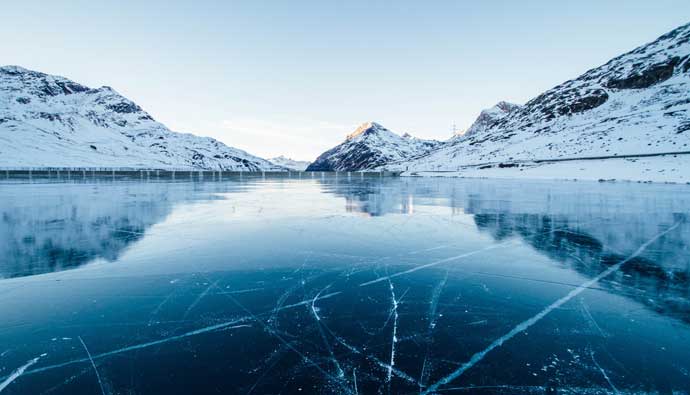
The ice shanty is stored onshore until the winter freeze. They are then rented to fishermen who slide them onto the ice and over their selected fishing hole. Many more brave the cold and fish right out in the open.
The ice that must be bored or cut through can be several inches thick. Actually, the thicker the ice is, the better. This makes being on the ice much safer.
Here’s an example of an ice auger you can use to drill your fishing hole in the ice.
If it’s your first ice fishing experience, make sure to go with a more experienced ice fisherman. This way, you’ll learn the ins and outs.
Where to Go Ice Fishing
You don’t have to go all the way to Alaska. Minnesota, Devil’s Lake North Dakota, Lake Michigan, Colorado, Lake Winnebago, and Wisconsin offer some of the best fishing spots anywhere.
It is well known that areas like Colorado and Lake Winnebago have some of the best fishing in the summertime. These are also prime spots for some good fishing in the winter as well.
Lake Winnebago winter fishing is known as a “once-in-a-lifetime experience” from a spear house. This is where ice fishermen can try out their spear skills.
This type of fishing requires using an auger to cut through the thick ice and sitting above the hole and waiting for one of the many large sturgeon to swim by, then thrusting the spear. It is not uncommon for an angler to pull out a 100-pound sturgeon.

Everyone knows Colorado gets some very cold winters. Waters in Colorado can easily freeze solid enough to support the weight of a vehicle.
The many anglers who flock to Colorado for fly fishing can use this as an opportunity to try out their walleye fishing skills.
Wyoming is another trip that is well worth taking. Not including the unmatched scenery, Wyoming offers great locations to catch more fish.
According to Tina Chapman, Owner of Chapman’s Mille Lacs Resort, Mille Lacs Lake is a hot spot.
In Minnesota we drive vehicles on most lakes and on Mille Lacs Lake where we are located there are many miles of plowed roads that include bridges, speed limit and road signs. There is an art to plowing ice roads.
Tina Chapman
When fishing, choose weedy areas. These places supply fish with shelter, oxygen, and prey. Drop a line here and wait. A drop-off near weedy areas is also a good choice. Some anglers fish (and even most ice fishermen) several ice tip-ups simultaneously. This increases their chances of catching more fish. A specialized jigging rod is also a good choice in shallow water weed fishing. Try to also look for fish in rock piles and mid-lake humps.
Recommended Fishing Line
For Mille Lacs Lake, when fishing for walleye or panfish, use a lighter line and small hooks. The heavier line is used for Northern Pike due to their teeth and not so much their fight.
Hot Spots
On Mille Lacs, sometimes the best spot is in the middle of nowhere away from the crowd.
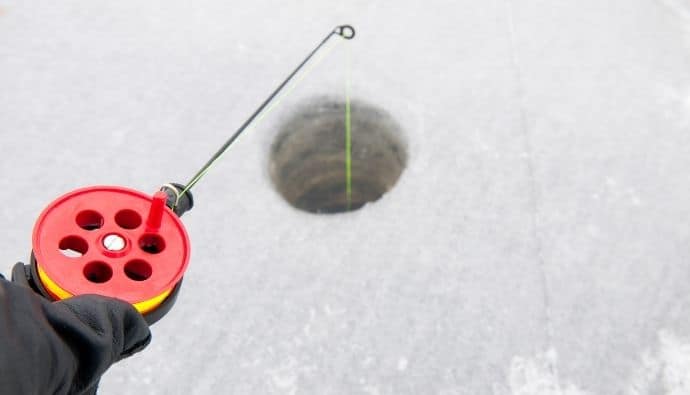
When fishing, remember your fishing spots and mark them. By the time the ice forms, you can come back to it and start catching more fish.
How to Catch Fish in Winter
Obviously, having the right equipment and knowledge is the focal point of a successful and unforgettable excursion.
Anglers that fish in the ice regularly, will most often have or rent a boring machine to open up holes in the ice.
Using Augers
This machine consists of a gas-powered engine and a large drill bit, also known as an auger or ice auger. Use augers to drill holes. You will need a manual or gas-powered auger. A gas-powered one makes drilling holes easy if you’re thinking of doing a lot of fishing in the winter, whether it’s your first ice fishing trip or your 20th.
This auger bit is usually the correct size for the hole you will be fishing through. This eliminates the need for multiple drilling to get the correct-sized hole.
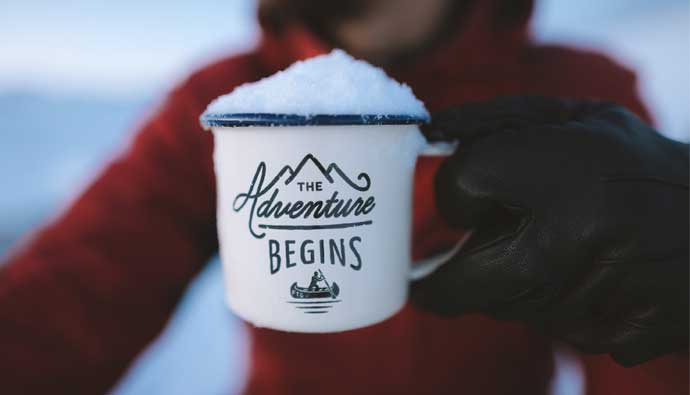
Ice Fishing Saws
Another method is an ice saw. This is a handheld saw with teeth specially designed for cutting through ice. This allows the angler to cut open any size hole they would like to fish.
Since casting is not required, some anglers omit the reel altogether. Considering the area you are fishing and the potential size of fish you may catch, a substantial rod may be in order.
Ice Fishing Line
Another consideration is the type of line to use. Since anything you catch will be pulling against the edges of the hole you are fishing through, you will need a line that is as abrasion-resistant as possible.
Braid line is probably going to be your best option.
Ice Fishing Hooks
Hook choice again will depend on the type of fish you are going after. These fish can be anything from perch to crappie to walleye or sturgeon.
For this reason, it is a good idea to have a variety of hook sizes as well as shot weights. Some anglers use a bell to alert of a bite as well.
Ice Fishing Baits
The best fish bait to use is more often live/cut bait. This is especially true if you are going to let your bait “sit” until a hungry or curious fish swims by. The earthworm is a delicacy to many fish.
Jigging is a method known to most anglers. Jigging for walleye is another common style.
This is done in much the same way as when fishing normally with the exception of going straight up and down.
It is a good idea to know the general depth of the area you are fishing. This can make a difference in the decision of jigging vs. still bait.
Using an attractant in some cases is also a good idea. Considering you are limited as to where you can put your bait. If it is hard for you to get to the fish, bring the fish to you.
Attractants such as bait clouds work great. These are attractants that, once placed in the water, they radiate out a very powerful scent that can travel the currents under the ice. Fish will often follow this scent to the source.
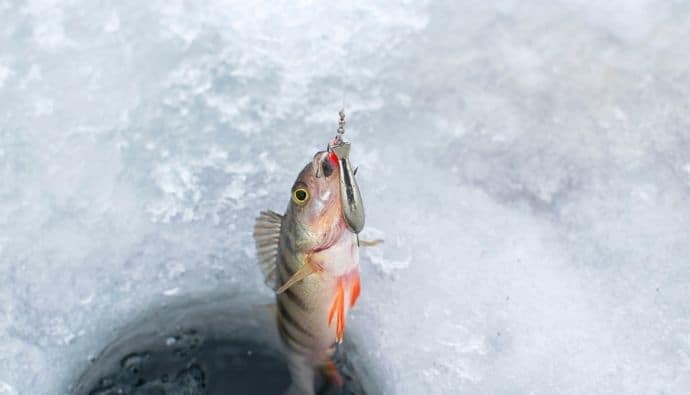
Ice Fishing Tips And Tricks
Ice fishing is a challenging yet rewarding experience. We’ve researched some of the best tips and tricks to help you get the most out of your trip.
Jigs
Many anglers use spoons and minnow heads to make their jigs look and act as lifelike as possible.
However, we have found that soft plastics actually kick it up a notch, especially when used with attractants.
It is much more convenient to replace a lost soft plastic than it is to set up a whole other jig arrangement.
By simply sticking a pack of soft plastics in your pocket, you can replace a lost bait in half the time and get back to fishing.
Tip Ups
When using tip-ups, always use the lightest line possible.
This will help you detect even the slightest of bites.
In addition, be sure to change your line regularly, as it can weaken over time.
Hot Spots to Ice Fish
Since small baitfish frequently cruise the shoreline, this is a prime spot to set up to fish for predatory fish. This is also true of drop-offs and grassy areas where baitfish are known to hide.
Another area to check out is open pockets. These are places larger predatory fish use to lay in waiting for an unsuspecting meal to swim by.
It is not necessary and, in some cases, not productive to set up in the middle of a frozen fishing area.
Fish tend to feed and stick to the same routine as they do in the summer. The only difference is they can be less reactive.
Be Quiet
Water levels can be quite low in some areas. Noise on the ice above will travel and can be amplified to fish underneath.
Any movement and noise on the ice above can just about assure that you will spook the fish below.
There will be some noise involved in getting set up. Once you have everything ready, it is a good idea to start with some attractants and try to be as still and quiet as possible.
As the fish’s appetite gets the best of them, they will return.
At that point, you can start working your bait a little bit more to trigger a strike.
Chumming
Chumming is an effective way to attract fish and get them fed. Chumming also has the added benefit of helping to keep the area around your hole clean.
By simply adding some chum to the water, you can attract fish and keep them in the area.
Chum is simply any type of bait or food that you add to the water to attract fish.
This can be anything from chopped-up baitfish to corn, to dog food.
Whatever you have on hand that will sink and attract fish will work as chum.
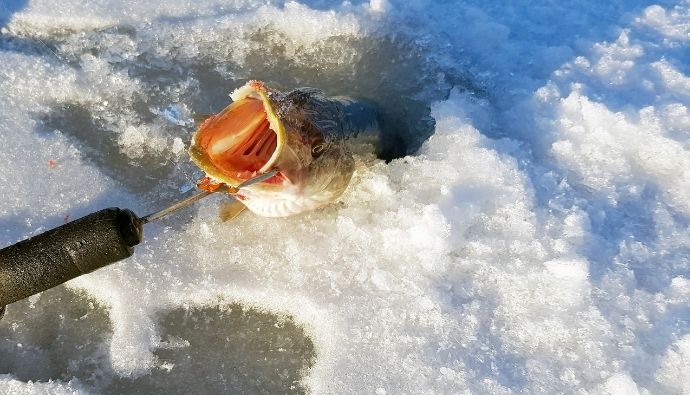
Final Thoughts
Fishing in the ice is a great way to shake the miss fishing blues of anglers who are feeling the effects. It is a pretty straightforward way of fishing.
It does not require a lot of special ice fishing gear. This makes traveling to a fishing spot much easier.
There is a variety of fish that can successfully be landed during the winter, as mentioned in this article.
We hope you will go out and give it a try and let us know how it worked out for you.
FAQs
For walleye, jigs have been the most successful. However, you can not rule out live bait, which works in most cases when nothing else will.
The best technique is to keep the jig looking and acting as realistic as possible. In many cases, this can be achieved best using soft plastics and a slow and steady drop and retrieve.
It is always advisable to check with the state conservation office where you will be fishing. In most cases, no “special” license is required other than a fishing license.
As you can see, there are many different things to take into account when winter fishing for northern pike, trout, largemouth bass, and smallmouth bass. However, if you remember these tips and tricks and put them into practice, you will be well on your way to catching more. What other advice would you give someone who is just starting out fishing for these species in winter? Let us know in the comments below!




 Facebook
Facebook YouTube
YouTube